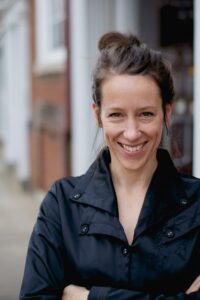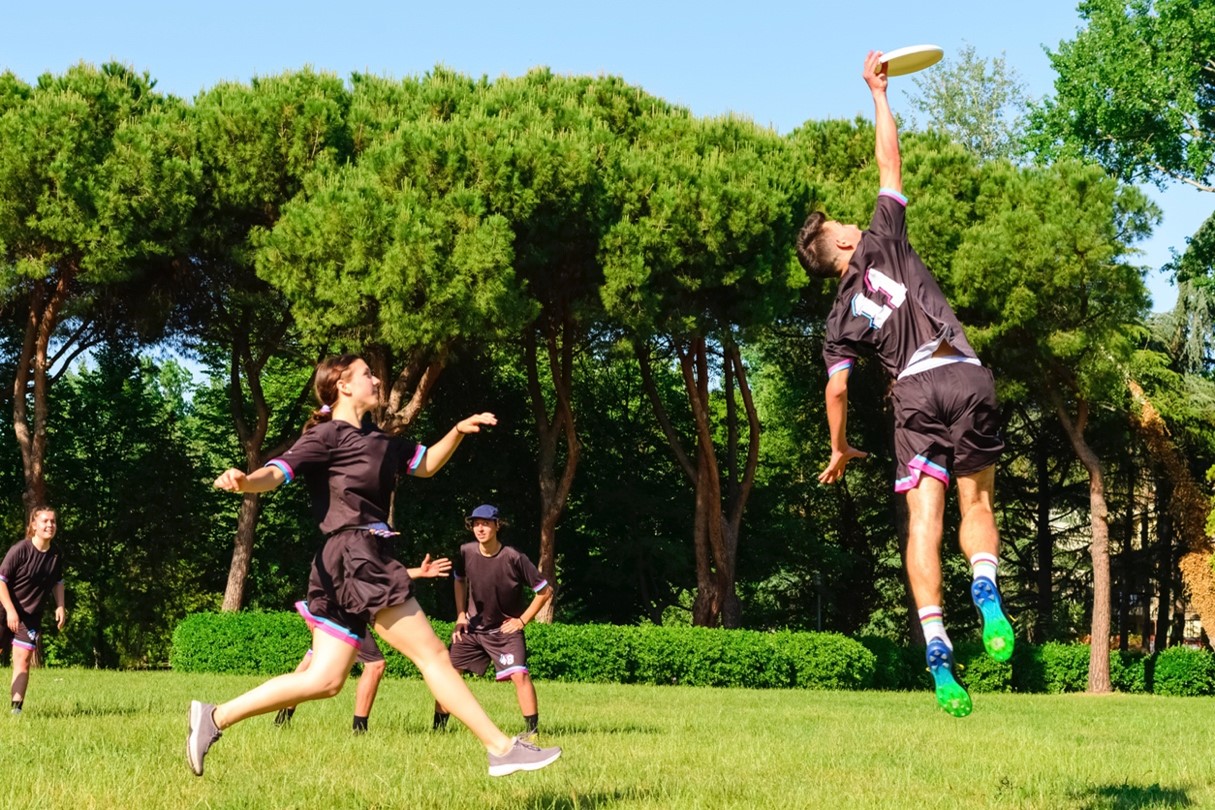The design director at D. Studio in North Carolina talks about the importance of play, and evolving design thinking

Q: How did you first fall in love with design?
A: I knew I would end up in New York and Paris to study painting and sculpture when I was in 6th or 7th grade.
Q: Do you have a powerful childhood memory?
A: Traveling throughout Italy as a five-year-old with my family, and being in Pompeii and Rome specifically, left a big impression on me. My mother is Italian and my father is Danish; the love for great design and comfortable living is so natural for me.
Q: Can you share an example of architecture or interior design that inspires you?
A: Spaces from architects like Wang Shu of the Amateur Architecture Office in China. Wang Shu’s upcycling of traditional building materials creates such a forward future but it never loses a deep sense for the humanity of living.
Q: After grad school, you started working at VMDO Architects in Charlottesville, Virginia. How did you launch your career there?
A: My first project at VMDO was a small athletic center for Longwood University in Farmville, working directly with two principals. It was a fabulous start as it was a grounding for landscape and the power of a garden wall to frame the spectacle of sport. It offered a challenge to work with minimal materials while striving for simplicity. I ended up staying at the firm for 15 years. It was my home away from home.
Q: What do you hope to see more of in the educational design realm?
A: In the U.S., I hope to see more authentic, visionary work and less replication of the same thinking and standardization of details. To do that work, it may mean starting an educational project long before a team hits the drafting board. The nuances of a place, a culture, and the subtlety of conversations about a community’s future is exciting work but also a human, not mechanistic work. It takes time to understand a community and what their priorities are in the long term. As a forever optimist, I believe that one school, when seen as a cultural asset, can shift a community toward the future it wishes for. It’s that important because a school is an influence for thousands of young minds, shaping generations of expectations.
Q: Can you delve into a recent project that you are particularly proud of?
A: Crow Island School in Winnetka, Illinois, designed by Eliel and Eero Saarinen. It opened its doors in 1940 and is still opening a child’s imagination today. I am humbled and grateful to be part of its history with work that I do in concert with the Stewardship Group and the school community. It’s a lesson on how the client—school boards, superintendents—is the most important. Without their vision, courage, companionship, and sometimes political will, you don’t have a chance to do great work.
Q: How important do you think play is to a child’s education?
A: Play is vital and natural to our lives as social animals. I had the great fortune of being friends and collaborators with the late psychologist and professor Edith Ackermann. Her quote that “play is a child’s most serious work” and the conversations we had about human fundamentals completely re-engineered my approach to designing for, and with, children. We tend to lump all of childhood into the term ‘children’ but there are factors at every stage of development that offer up new, fresh insight on how designs might encourage participation, interaction, innovative problem-solving, and choice-making from infancy through adolescence.
Q: What type of project have you not yet worked on that you would like to?
A: Working with visionary educators on an experimental project to imagine a future for nature-based science and art labs. It’s a dream to generate some real-world research, to evolve a design thinking set of practices, and to build a learning lab open to educating educators as well as serving children’s needs for meaningful experiences outside of school.
Q: What is it like being a part of AIA?
A: I was invited to create the first task force focusing on research in 2015. Alongside co-chair Caroline Lobo, we’ve held a steady course to ensure that research has a place alongside design, that it has value for the larger membership and beyond. It is very rewarding to work with practitioners from around the country who are passionate about design excellence, and critical topics like school safety/security, health and well-being, and sustainable and regenerative design.
Q: Tell us about your passion for the intersection between education and health.
A: We work for food, we shop for food, we prep for meals, we clean up after them, we farm and garden, we think about the next day’s meals. Food is the center of family and social life. Why, I thought back in 2010, aren’t we questioning the old school cafeteria and asking it to do more for us as a 21st-century learning environment? VMDO had already pioneered some interesting work in this space of dining, but it was in collaborating with public health experts and a pediatrician that we were able to unpack the food environment in schools and reimagine all of it. We are indebted to the work of doctors Terry Huang, Matthew Trowbridge, Jeri Brittin, Leah Frerichs and more. As a team we pioneered the first-ever ‘Healthy Eating Design Guidelines for School Architecture’ and ‘Physical Activity Design Guidelines for School Architecture’ along with a two-year longitudinal study.
Q: Tell us D. Studio. What is your approach?
A: I’m attempting to take the best of all my experiences and influences to create an interdisciplinary practice that makes space and time for transformative work to evolve. The world changes at a constant high rate of speed, so I believe part of my responsibility as a designer is to be mindful of time by being more present and bringing that same opportunity to clients, to slow down just enough to realize something, to have an epiphany of their own.








